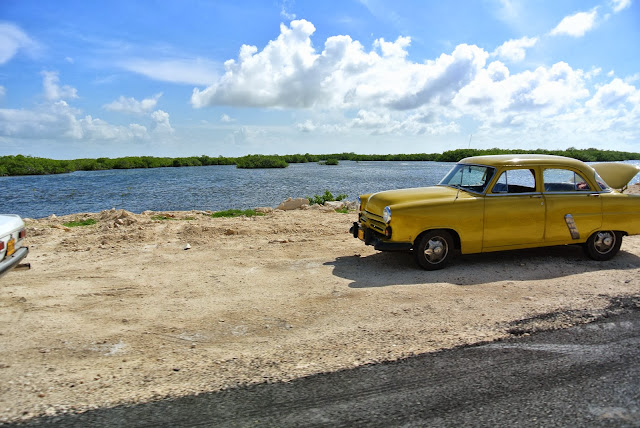 |
| A beach in Cayo Coco, Cuba. |
 |
| A mangrove swamp in the Gardens of the Queen marine reserve. Photo by Ian Shive at The Nature Conservancy. |
 |
| A reef in the Gardens of the Queen. Photo by Rod Griffin at EDF. |
With the snow-induced nostalgia, I found myself flicking through photos from my trip to Cuba in May, and re-watching the documentaries about conservation efforts going on in the Gardens of the Queen, Cuba. (I linked to them in this previous post.)
I've actually been reading up on the Gardens of the Queen quite a bit in the past few weeks. I found a couple of really great resources on environmental protection and marine conservation in Cuba, especially with regard to the Gardens of the Queen marine reserve. The first is the Environmental Defense Fund, which I mentioned in a previous post. Daniel Whittle, director of EDF's Cuba program, has fascinating work going on in Cuba through EDF. He works in partnership with Cuban scientists, lawyers, resource managers, etc., to implement sustainable fisheries management, coastal development, and coral reef conservation in Cuba. He is a strong voice in promoting cooperation between both Cuban and American scientists.
Another similarly prominent voice in this area is Dr. David Guggenheim, the president of Ocean Doctor. Ocean Doctor is a non-profit organization dedicated to protecting and restoring oceans through research, education, and building international partnerships, with a special emphasis on Cuba and the Gulf of Mexico. As the director of the Cuba Conservancy program, Guggenheim appears in almost every documentary and short video clip on the Gardens of the Queen I've seen, including the two videos I posted previously.
I came across an article where Guggenheim discusses the purpose of Ocean Doctor, and addresses the question that my friend asked about how the reefs in the Gardens of the Queen have remained in such pristine condition for all this time. Guggenheim writes, "Why is this place so healthy? That's the basis of one of Ocean Doctor's collaborative projects with Cuban scientists. The Gardens of the Queen represent an opportunity to understand how a pristine coral reef ecosystem works, gain insight as to why it's so healthy, and guide conservation efforts for coral reefs around the Caribbean and the world. We also work with Cuba's environmental economists to understand the importance of ecotourism to the Cuban economy, and why grouper are worth more beneath the waves than beneath a sweet mango sauce." That last line made me laugh, but it's true.
Ocean Doctor actually offers a Cuba travel program for Americans, which is surprising and exciting on many levels. For educational purposes, the program allows for Americans to legally travel to and scuba dive in the Gardens of the Queen. That's a big deal. I don't know if I can stress how big of a deal that is. I think I mentioned before, the Gardens of the Queen has been a no-take marine park for many years, and recreational activities are strictly regulated to 1000 scuba divers per year. I'm not really sure how they've managed to organize all of this, but how exciting is that?
I tell no lies, you can check it out yourself: http://oceandoctor.org/gardens/














































